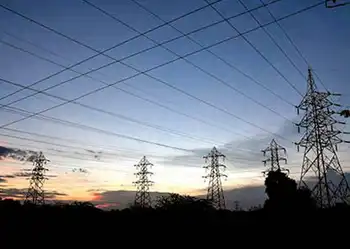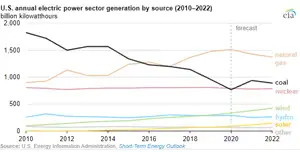Will electricity supplant natural gas?
By Toronto Star
CSA Z463 Electrical Maintenance -
Our customized live online or in‑person group training can be delivered to your staff at your location.

- Live Online
- 6 hours Instructor-led
- Group Training Available
"About 36 per cent of Toronto's carbon dioxide emissions come from natural gas," says Philip Jessup, executive director of the Toronto Atmospheric Fund.
It calls attention to our strategy of doubling natural gas plant capacity as part of the province's 20-year power system plan. It also puts the spotlight on "fuel-switching" – that is, ditching your electric stove in favour of natural gas, or getting rid of that electric resistance heating in favour of a natural gas-fired furnace.
Compared to electric heating, there's no disputing that natural gas is currently cheaper. But is it cleaner than electricity?
Not in Ontario. Not in Toronto. In fact, once all coal plants are shut down, a lion's share of the electricity in the province will come from nuclear, hydroelectric and wind power. That means using electricity to heat your home will result in far less greenhouse gas emissions than using a natural gas appliance.
So the question is, how do we make using electricity cheaper?
Duane Hallowell, 34, a former cryogenic engineer with the U.S. navy, is focused on this mission. He founded a company in Maine three years ago, called Hallowell International, aimed at getting households in northern U.S. and Canadian climates off of fossil fuels.
What he invented was a new kind of heat pump, which as a technology has existed for decades. The difference is that Hallowell's heat pump, called Acadia, was designed to work efficiently in temperatures as low as minus 30 degrees Celsius – that is, in Canadian winters.
"For the same amount of energy to heat a house with resistance heating, you could heat three homes with an Acadia," he says. "And that's a worst-case scenario."
There are typically two kinds of electrical heat pump systems – air-source and ground-source.
The latter is what we commonly know as low-temperature geothermal, which cools a building by extracting heat from inside and dumping it in the ground; or in reverse, heats a building by pulling heat out of the ground and releasing it inside.
Geothermal systems can run $25,000 to $35,000 for a residential retrofit, which is a tough bite to swallow even though the payback is much quicker than, say, solar power or small-wind systems. A big part of that cost is the need to drill holes in the ground and line it with tubing. Glycol or food-grade ethanol in the tubing acts as the energy carrier, exchanging heat between the ground and the building.
A ground-source system is more efficient than an air-source one. The temperature in the ground is more constant than the ambient air, so ground-source heat pumps don't have to work as hard.
But hurdles to their deployment remain. If the drilling or tube laying isn't done properly, or if the system isn't sized accurately for a home's cooling and heating needs, fixing it can be a nightmare.
These risks are falling, which is encouraging, and generous government incentives – $7,000 from Ottawa and the province combined – do help ease financial pain. But nagging "what if" worries of ground-source systems remain.
In urban areas, geothermal also poses problems. When you live in the Annex or Beaches and have little backyard space to spare, then the logistics of drilling holes and laying tubing become tricky. Tricky equals higher cost.
Air-source heat pumps work in much the same way as geothermal systems, but instead of the ground, they use outside air to extract and release heat. Home refrigerators work in a similar way. They extract heat from the food in your fridge and release it from coils behind it.
Air conditioners are a one-way heat pump – in summer it extracts heat from inside air and dumps it outside. Air-source heat pumps are popular in the U.S. south because they work like air conditioners, plus they can provide limited heating if temperatures drop.
"Unfortunately, they're still just being developed primarily as air conditioners with a major deficiency in heating," says Hallowell.
It's why they've never taken off in Canada. Once temperatures drop below freezing, a conventional air-source heat pump is useless.
Hallowell saw the neglect, so he went ahead and engineered a better air-source heat pump – one that operates during the summer like an Energy Star central air conditioner but in the winter handles all of a home's heating needs. "Are we as efficient as geothermal?" asks Hallowell. "Well, we're close."
Natural Resources Canada is now testing the Acadia system. I consulted an energy consultant who is also testing it for the Manitoba energy ministry. He didn't want to be named, but had good things to say.
"They're the real deal. Technically, there's no massive, innovative, wizardry here. Just compressors and booster coils and good control systems. Very well done."
His only concern was that Hallowell is still new to the market so it doesn't yet have a track record for service and maintenance. "So if you're getting one of these early units, see if they'd provide guarantees of servicing and back-up."
Hallowell's Canadian distributor, MITS Air Conditioning Inc. of Mississauga, says it costs $14,000 to $16,000 to purchase and install an Acadia system, compared to about $11,000 for a high-end air conditioner and gas furnace.
Unlike geothermal, there's no ripping up of grass. No drilling. "If it does break it's easy to fix because there's nothing underground," says Jim Chaters at MITS.
Currently, the federal government offers a $400 incentive to purchase an air-source heat pump. The province matches that. Hallowell is trying to get that incentive increased so it's at least half of what geothermal systems get.
Chaters, who sells all kinds of conventional heating and cooling equipment, says four years ago he'd never given much thought to heat-pump technology. Then his eco-minded daughter began pushing him to look for better options.
"Air-source heat pumps are the future, because they're getting more and more efficient."
Jessup at the Toronto Atmospheric Fund adds: "We are going to have to move to these technologies in a big way if we are to meet the ambitious (emissions) targets that Toronto council has set."











